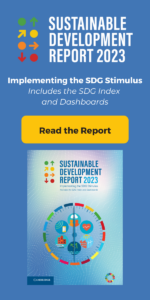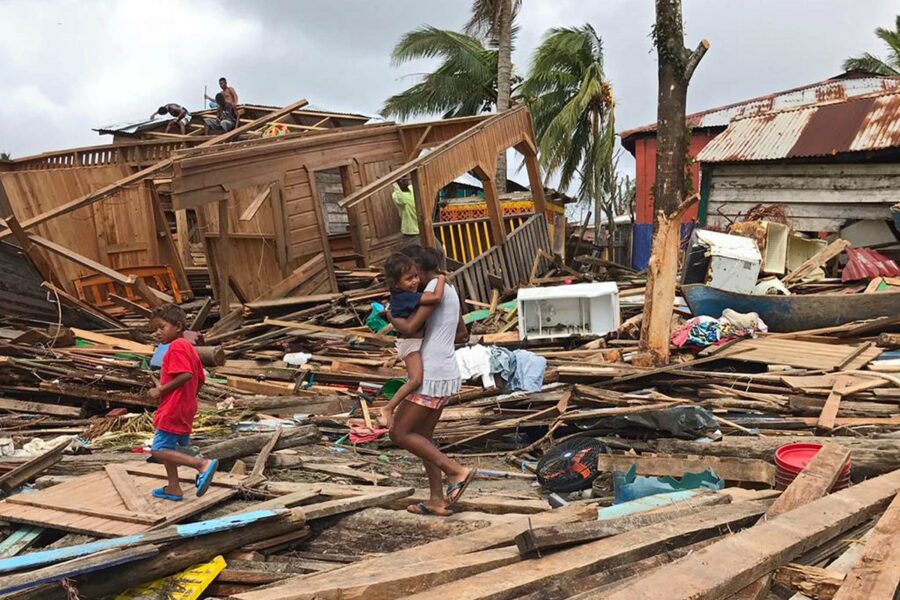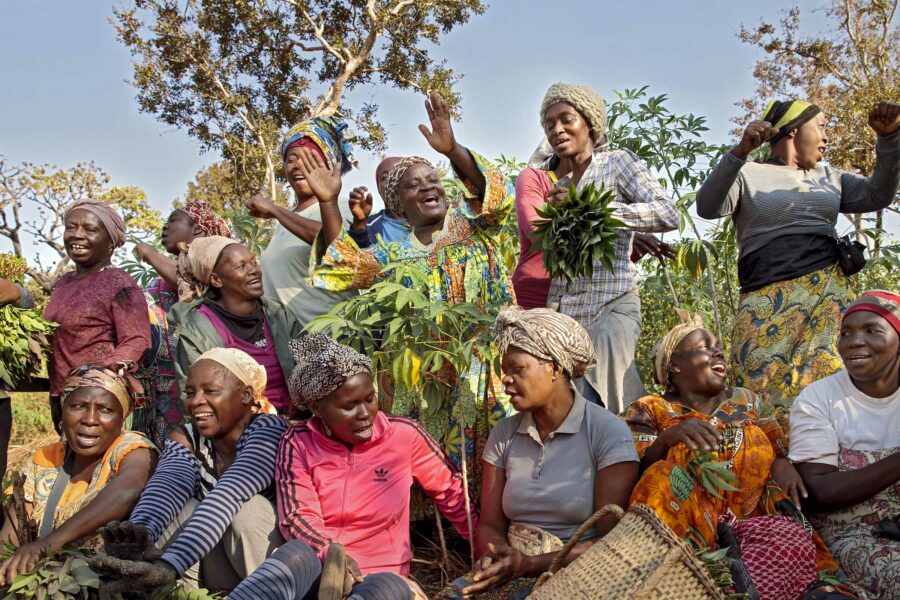Curbing deforestation through strategic trade and subsidy policies: a global imperative
The EU’s unilateral approach to curb deforestation through restrictions on imports sends a powerful message, but will it deliver? Here, the authors argue that successful global action on deforestation calls for a carefully balanced system of tariffs and subsidies from a wider coalition of countries
Economic development

In the context of the European Green Deal, the European Parliament reached a provisional political agreement on deforestation, ensuring that a list of selected agricultural and forestry goods entering the EU market “will no longer contribute to deforestation and forest degradation in the EU and elsewhere in the world.” The EU has chosen a unilateral approach to curtail the conversion of forest zones into farmlands producing agricultural commodities consumed in Europe by expanding the currently established due diligence guidelines. This strategy emphasizes the responsibility of European operators, in conjunction with exporters and traders, that aim to retail or dispatch their products within or from the EU.
This EU provisional agreement sends a powerful political message, highlighting the urgent need to address global deforestation. However, the regulatory approach chosen by the EU is not the most straightforward to implement. First, the global supply chains embodying agricultural commodities produced from deforestation are a complex network, where the items usually undergo different transformations in several countries. These complex interconnections and wide-ranging indirect impacts before reaching the EU market, combined with the lack of enforcement of local legislation, make it challenging to ensure that products linked to deforestation are effectively kept out of the EU market.
Key deforestation countries have also expressed their concerns about the EU’s unilateral approach, arguing that this may disrupt trade, deter investment, and negatively affect their economic welfare. Such effects can provoke resistance to economic openness, especially if they are deemed to stem from inequitable foreign policies. Last, a particular focus on Brazil (a key country in the fight against deforestation) underlines that with such a unilateral approach, lacking proactive engagement from other major consumer markets, the EU provisional agreement may have only a marginal effect on reducing Brazilian deforestation (representing less than 4% of the yearly agriculture-driven Brazilian deforestation).
The effects on other key deforestation players remain to be evaluated more specifically. However, regarding Brazil’s central role in deforestation, while the proposal represents a well-intentioned effort to reduce the EU’s overseas deforestation footprint, its effectiveness in curbing global deforestation may remain limited. Considering this, exploring alternative approaches and offering more effective strategies to explore other scenarios becomes imperative.
Tariffs and subsidies: a delicate balance
One of these approaches relies on trade and involves the formation of a coalition of countries imposing tariffs to limit deforestation. This idea draws from the Climate Clubs theory, where a coalition of countries cooperate to achieve shared objectives, maximizing their welfare and penalizing non-compliant countries with tariffs. As mentioned by Fusacchia et al. in The Forest Content of Global Supply Chains: Which Policy Mitigation Options?, the EU could convince an international group of countries committed to mitigating deforestation but not directly involved in the deforestation process. As such, in a working scenario, they would agree on a tariff system imposed on goods produced in regions with high deforestation rates. They would then channel financial resources to enhance productivity in agriculture production in countries where forest resources are relevant. This would alleviate several problems, including the amount of finance from high‐income countries to low and middle‐income countries to limit deforestation without compromising economic growth goals. Last, the efficient use of those financial resources by the countries where deforestation happens could be done via different subsidy mechanisms.
The delicate task of calibrating tariff levels poses a significant challenge, necessitating forming an international consensus among the coalition’s constituents. This becomes particularly complex given different nations’ divergent economic and environmental agendas and calls for a nuanced understanding of the potential impacts. However, the solution space becomes relatively confined once all parameters are defined, reflecting the characteristics of the trade coalition. On the other hand, the task of redirecting tariff revenue to deforestation-contributing nations through various subsidy mechanisms is daunting. Ill-conceived subsidies, inducing economic distortions, may hinder the growth of nascent sustainable industries, particularly in lower or middle-income regions. Conversely, well-orchestrated subsidies might serve as a more effective countermeasure than strategies that focus on trade restrictions. Accurate quantification of subsidy amounts is also critical to striking an appropriate balance between trade and subsidies. Beyond their ineffectiveness in correcting market failures, distortionary subsidies can redirect trade and investment flows, undermining the worth of tariff commitments and other market access agreements.
A central query emerges: how to determine the equilibrium between tariffs and subsidies required to effectively mitigate deforestation in countries where deforestation is prevalent without compromising those countries’ welfare? This involves juxtaposing the societal costs of potential tariffs on agricultural commodity exports with the value of preserving expansive forest areas. The potential impact on the livelihoods of thousands working within agricultural sector further complicates the situation. Moreover, the comparative ecological worth of a mature tropical forest against a recently cultivated one adds an additional layer to this multifaceted dilemma. These considerations underscore the intricate mesh of economic and environmental variables that require meticulous evaluation to balance the diversity of stakeholders and outcomes.
Pricing ecosystem services
These parameters are intricately varied and complex, making the exact societal cost computation seemingly insurmountable. Evaluating ecosystem services can bring a solution. Ecosystem services are the direct and indirect contributions of ecosystems to human well-being. These services range from provisioning services like timber and non-timber forest products, regulating services such as carbon sequestration and climate regulation, to cultural services that include spiritual and recreational benefits. Valuation of these services provides a quantitative measure of the benefits humans derive from ecosystems, thereby making explicit the implicit value of these services. This enables incorporating these values into decision-making processes, promoting more sustainable land-use choices.
Determining the optimal tariffs and subsidies mechanisms involves translating the value of ecosystem services lost due to deforestation (or, conversely, saved) into monetary terms. When forests are destroyed for timber or to make way for agriculture, the immediate financial gain often overshadows the ecosystems’ long-term benefits. These benefits include biodiversity conservation, carbon storage, water filtration, and soil conservation. They also extend to cultural and spiritual benefits, the value of which is often challenging to quantify but undeniably crucial. In summary, by leveraging the valuation of ecosystem services as a tool for calculating the societal costs of deforestation, we can design tariffs and subsidies that account for these costs, promote sustainable practices, and encourage countries to join a coalition dedicated to forest conservation.
The cost of spillovers
In addition to those direct and indirect costs of deforestation accounted for by the valuation of ecosystem services, there are also consequential impacts on the environment that arise from physical spillover effects. As such, one potential consequence of channeling financial resources to enhance productivity in agriculture production in countries where significant deforestation happens is to intensify agricultural practices.
However, this switch from extensive to intensive agriculture could lead to further negative environmental impacts. In the case of Brazil, intensified agriculture could lead to increased use of nitrogenous fertilizers, leading to higher nitrogen emissions. Water and wind could then carry these emissions to neighboring countries, triggering eutrophication in those regions. Eutrophication, primarily due to excess nutrients such as nitrogen and phosphorus entering water bodies from agricultural run-off, leads to harmful algal blooms and oxygen depletion, disrupting marine ecosystems and biodiversity.
This potential domino effect underscores the importance of considering those indirect physical spillover effects in the evaluation of societal costs of deforestation. By combining these with spatially explicit Life Cycle Impact Assessment models, we can track the path of nitrogen emissions from their source to their impact locations. Including such physical spillover effects in the cost evaluation helps create a comprehensive picture of the impacts of deforestation. It also helps avoid problem-shifting, where mitigation efforts in one area lead to environmental challenges in another. It facilitates the creation of policies that curb deforestation and guard against the displacement of environmental impacts. Last, this is also an argument for using subsidies, as well-tailored subsidies can promote sustainable practices in particular industries.
Conclusion
Ecosystems and pollution do not heed human borders, and environmental sustainability strategies must integrate this interconnected reality. Accounting for trade spillovers and physical spillovers between systems ensures the preservation of global ecosystem resilience and the sustainability of human societies interwoven with them. Addressing those multifaceted economic, environmental, and social impacts necessitates a holistic framework. The UN’s Sustainable Development Goals (SDGs) provide this platform, as the SDGs offer a universally applicable approach to map this interconnected network. Addressing deforestation impacts multiple SDGs, including SDG 13 (climate action), SDG 15 (life on land), and SDG 12 (responsible consumption and production). Other impacted Global Goals include SDG 8 (decent work and economic growth) due to the number of jobs potentially affected, and SDG 14 (life below water) due to the potential eutrophication impacts detailed above.
Fostering a sustainable future demands policy decisions underpinned by comprehensive cognizance of the environmental implications of economic activities. By accounting for both the direct and indirect impacts expressed in the SDGs framework and determining their monetary costs through the evaluation of ecosystem services, it is possible to reach a better-rounded policy measure reflecting deforestation’s true societal and environmental costs.







